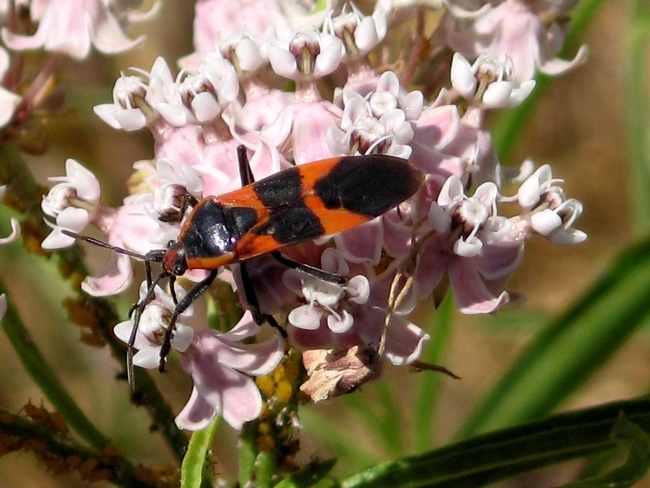The milkweed communities (family Asclepiadaceae) are host to an annual gathering of unique visitors. Over the next few blog posts I will take you into the close-up realm of the Narrow-leaved Milkweed (Asclepias fascicularis). Insect activity is at its highest during the summer months when the milkweed's flowers attract bees, butterflies, moths, and other insects.
Here you see the Large Milkweed Bug (Oncopeltus fasciatus), one of the "true insects" of the insect order Hemiptera, superfamily Lygaeoidea ("seed bugs"), and family Lygaeidae ("milkweed bugs"). All of the Lygaeoids have piercing-and-sucking mouth-parts. These unique bugs suck fluids from the young developing seeds, actually causing the greatest limitation of any insect damage to successful seed development within a clonal population.
Females lay their eggs into the milkweed plant tissue during warm summer months, and the eggs soon hatch into nymphs which develop rapidly, molting their external skins several times as they grow. Once they turn into adults, as shown in the photo below, they can overwinter. Milkweed bugs are foul-tasting to predators because of defensive chemicals (alkaloids) that they receive from feeding upon the milkweed sap. The bright orange and black coloration is Mother-Nature's warning sign that screams, "Don't eat me"!
